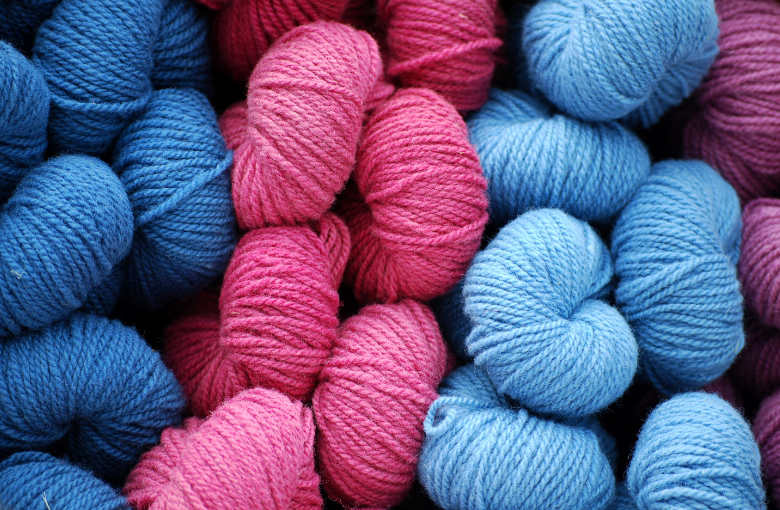
Organizing Your Yarn Stash
Share
If you’re like most fiber artists you have a large collection of amazing yarns just waiting for you to turn them into fantastic finished items or the next family heirloom. It doesn’t take much for this collection to get out of control. Here are some great tips for keeping your stash neat and tidy.
The first step in any organizational efforts is to know what you have. This is likely to result in a big mess before things get better, but it will be soooo worth it in the end. HINT: Consider your storage options, too. Sometimes you can’t make a storage decision until you know what you have, so taking stock first can help you make an informed storage decision.
Separate works in progress (WIP) and crafting supplies (like needles, hooks, stitch markers, etc.) from your yarn.
Next, focus on your WIPs. Separate anything that needs to be frogged (aka: ripped out and repurposed) from items that you plan to finish. Organize the projects you plan to finish in a way that makes sense to you. I like to organize these in chronological order starting with the one I plan to work on first on top. If you don’t have many WIPs you may not even have to organize them at all. Just keeping them together is enough.
For the items you plan to frog, you may want to decide if it makes sense to frog now so the yarn can be organized at the same time as your other yarns or put it off until last. Whichever method works for you is just fine.
Separate yarn you want to keep from those you will never use. For now, set a side those you will never use, we will get back to those in a bit.
Clean up messy yarns by winding into hanks. Also, convert any balls of yarn into hanks if they will be stored for a long period of time. Storing yarn in balls for an extended length of time can cause fibers to stretch. Long term storage in hank form allows the fibers to relax, which is better for the fiber in the long run.
Now we focus on organizing the yarn. Ooohh, my favorite. I love to look through what I have. I find that I am sometimes surprised by all the yarns I forgot I had and I get excited all over again at the idea of using them to make something beautiful!
Begin organizing your yarn by separating full skeins from scrap yarn. Then move forward with organizing your full skeins into groups. There are many ways to do this. Some examples are: place yarns you have plans for (aka: pattern all picked out and ready to go) in one group. Yarns with no plans in another, etc. Or you can simply group color or by weight, my personal favorite way to organize. There is no wrong way, really, just make sure it makes sense for you.
Once you have your groups separated, store like yarns together into subsections. For example, if organizing by weight, yarn of the same colorway within that weight should stay together so you can easily track how much you have.
Next, organize your scrap yarn in the same way you organized you full skeins.
Use Ravelry to document what you have. This way, it is a snap to find patterns and it is also really helpful if your labels get lost.
Once you are done with yarn you can do the same for your supplies keeping all like items together. It may even save you money because you won’t repurchase something you already have. Nice!
When moving your stash to your final storage area be sure to keep the yarn away from dust, water and insects. Yes, insects sometimes like to live in your yarn. HINT: A trick I learned from pine needle weaving is to freeze items that may have been exposed to insects for about 24 hours. Simply place yarn in a plastic bag and place in the freezer. This will get rid of most insects that may be in the yarn and prevent egg laying and worsening infestations.
Last, we return to that yarn you will never use. You can donate this yarn or list it to swap for something you may like better. Of course, dispose of any yarn that has been damaged in any way.
Well, that was a huge job but, boy, it feels good in the end.
Until next time…
XO
Linda
Shop our yarns!
Check out some of our other topics: yarn draft, fibers, gauge, needles, twist, ply and weight
Why avocado?
Breaking down your yarn needs
Our origin story
My yarn journey
